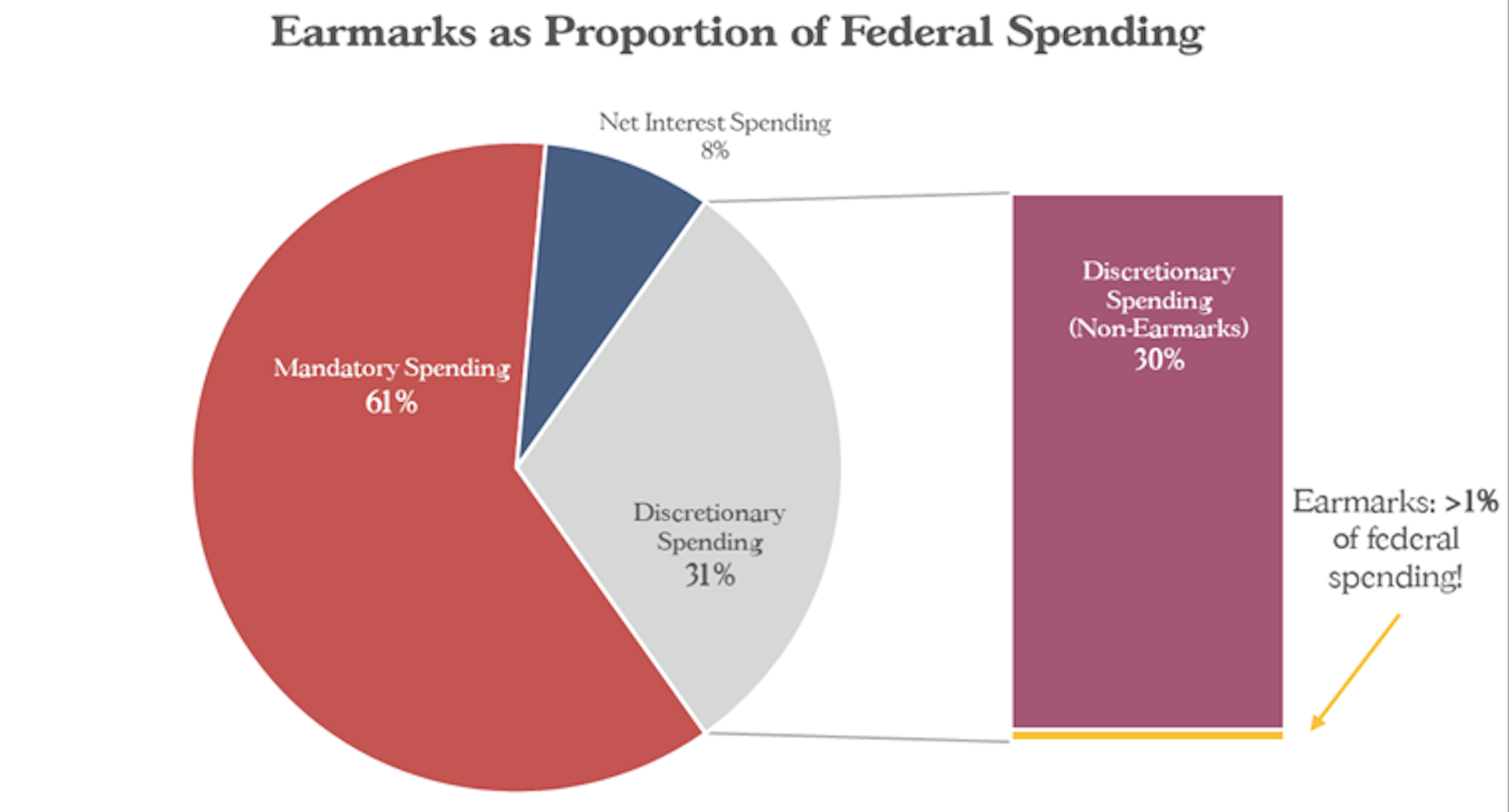Reporting on Earmarks: Resources for Journalists
This guide is part of an ongoing collaboration between the POPVOX Foundation and the Bipartisan Policy Center to raise awareness about the new funding opportunities, help Congressional offices manage their application processes, level the playing field for applicants, and document the reinstatement of this program. Many thanks to Franz Wuerfmannsdobler and Kyle Fischer at the Bipartisan Policy Center for their input on this guide. For more, please see here.
OVERVIEW
House and Senate Appropriations committees changed their rules in 2021 to allow the return of “earmarks” in annual appropriations bills. The reinstatement followed a 10-year moratorium, first implemented in February 2011.
A “Congressional earmark” is “a provision or report language included primarily at the request of a Member, Delegate, Resident Commissioner, or Senator providing, authorizing or recommending a specific amount of discretionary budget authority, credit authority, or other spending authority for a contract, loan, loan guarantee, grant, loan authority, or other expenditure with or to an entity, or targeted to a specific State, locality or Congressional district, other than through a statutory or administrative formula driven or competitive award process” (Clause 9 of House rule XXI).
The new system includes reforms geared to greater transparency and accountability. Requests through this system are:
Only available to nonprofits and government organizations,
Awarded for a specific project and location, and for one fiscal year at a time,
Listed publicly on the requesting Member’s website and by the relevant Committee,
Limited to 1% of Federal discretionary spending, divided proportionately between the House and Senate, Democrats and Republicans,
Not available to any organization where the requesting Member or a member of their immediate family has a financial interest, and
Subject to audit by the Government Accountability Office.
Funded projects had to go through an application process to be recommended to the Committee by a Member of Congress. In the House, Members were limited to ten requests in FY22, and 15 for FY23; requestors had to show evidence of community support for the project. Many Members had an element of civic engagement in the selection process, including inviting public comment or convening a community advisory board to weigh in on projects.
EARMARKS IN CONTEXT
Source: https://bpcaction.org/earmarks-guidance-for-the-117th-congress/
In the Consolidated Appropriations Act, 2022 (P.L. 117-103), there were a broad range of requests made by members of both parties from hundreds of thousands to tens of millions for a project. Overall, there were approximately 5,000 requests finally enacted with the average size project’s funding encompassing approximately $2 million. Additionally, this funding constituted less than one percent of the FY22 discretionary funding and far less than that of the overall combined federal budget, and the entire list of member requests can be searched on the BPC database.
Earmarks are an avenue for members to send discretionary spending directly to their district or state for a specified project, such as funding for infrastructure, community programs, university research, hospitals, and other local initiatives. They differ from the American Rescue Plan Act, or ARPA (P.L. 117-2), in that ARPA was a one-time emergency spending protocol done through the process of budget reconciliation, and those emergency funds were allocated for the sole purpose of COVID relief. Further, the funds directed in this legislation are directed to communities via a formula or competitive basis.
CITATION RESOURCES
Source: https://bpcaction.org/earmarks-guidance-for-the-117th-congress/
Link to Appropriations guidance
House (both)
Congressional Research Service background on earmarks
Context on earmarks from the Bipartisan Policy Center
Guide to the appropriations process for requestors
POPVOX Foundation review of best practices by Congressional offices during FY22 appropriations process
POPVOX, BPC, BWCA event summary: “Navigating Earmarks for FY22”
AEI event: “Reforming and Restructuring Earmarks: What is the path forward?”
EARMARK OUTREACH AND COVERAGE EXAMPLES
Jennifer Shuttt and Jacob Fischler, “Return of earmarks a boon for members of Congress facing midterm battles,” Kansas Reflector (March 12, 2022)
Tia Mitchell, “Ossoff, Warnock celebrate Georgia earmarks in spending bill ready for Biden’s signature,” Atlanta Journal-Constitution (March 11, 2022)
Daniel Desrochers, “Congress brought back spending earmarks. Here’s some of what Missouri got out of them,” Kansas CIty Star (March 11, 2022)
NPR Politics Podcast, “Once Derided as Graft, Earmarks Just Helped Congress Pass a Bipartisan Budget Deal,” NPR Politics Podcast (March 11, 2022)
Sabrina Eaton, “House of Representatives passes $1.5 trillion spending bill; See what’s in it for Northeast Ohio,” Cleveland.com (March 10, 2022)
“The Spending Earmarks Return, Do They Ever,” Wall Street Journal editorial (March 12, 2022)
Check for Member releases and outreach on social media, examples:
Rep. Chuy Garcia (tweet
Maj. Leader Steny Hoyer (press release)
ABOUT POPVOX Foundation
POPVOX Foundation is a nonprofit 501(c)3 that works “to inform and empower people and make government work better for everyone.” This includes reimagining the concept of “civic infrastructure,” and providing new ways for government to share information and engage the public, with an emphasis on diverse participation and rebuilding public trust.
POPVOX Foundation does not lobby and did not take any position on the return of earmarks. Once the process was reintroduced, the organization worked to raise awareness about the new funding opportunities, help Congressional offices manage their application processes, and level the playing field for applicants.
ABOUT The Bipartisan Policy Center
The Bipartisan Policy Center (BPC) is a Washington, D.C.-based think tank that actively fosters bipartisanship by combining the best ideas from both parties to promote health, security, and opportunity for all Americans. Our policy solutions are the product of informed deliberations by former elected and appointed officials, business and labor leaders, and academics and advocates who represent both ends of the political spectrum. BPC prioritizes one thing above all else: getting things done.




